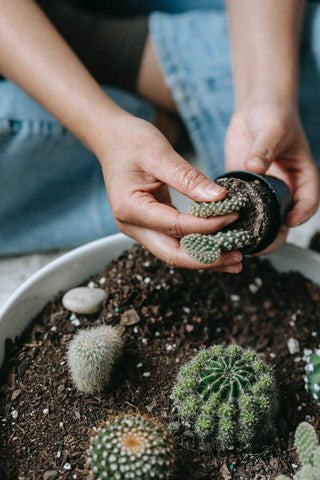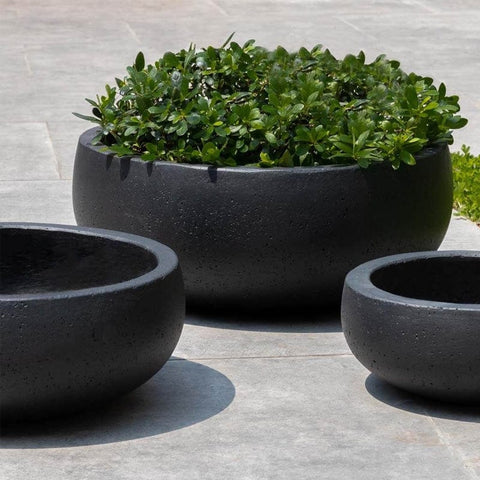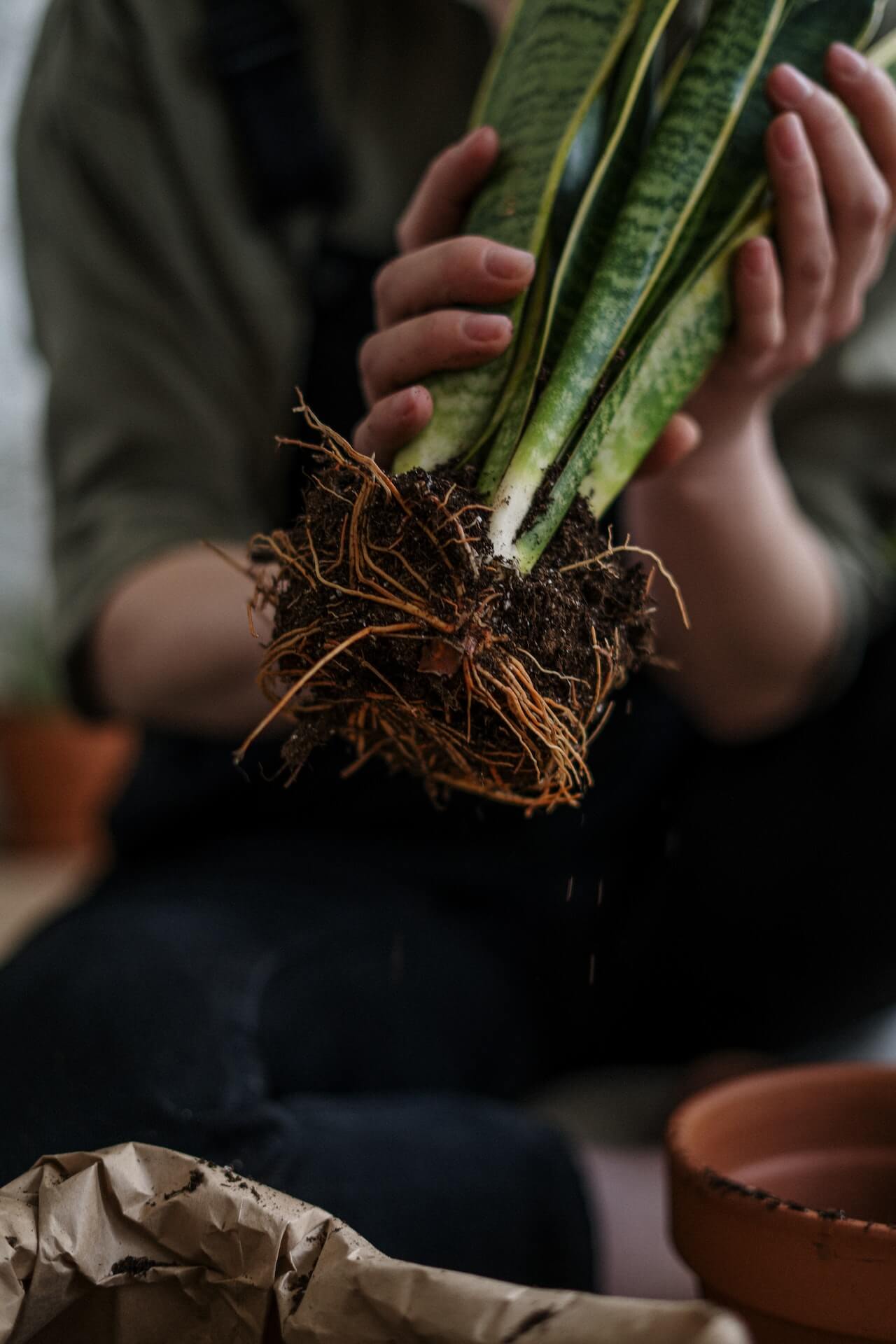Container gardening is a popular way to grow plants, especially for those who have limited space or live in urban areas. Incorporating plants into urban spaces offers an opportunity for creativity, transforming concrete jungles into green oases that enhance the aesthetic appeal and well-being of city dwellers. One of the most important factors in container gardening is choosing the right potting soil mix. The potting soil mix provides the necessary nutrients and support for the plants to grow healthy and strong.
Choosing the best potting soil mix for container gardening can be a daunting task, as there are so many options available in the market. The right potting soil mix should be able to retain moisture, provide adequate drainage, and have the right balance of nutrients for the specific plants being grown. It is important to consider the type of plants being grown, the size of the container, and the growing conditions when selecting the potting soil mix.
Choosing the Right Potting Soil
When it comes to container gardening, choosing the right potting soil is essential for the health and growth of your plants. Potting soil is a mix of various organic and inorganic materials that provide nutrients, aeration, and drainage to the plants. Here are some factors to consider when choosing the best potting soil mix for container gardening.
Choosing Potting Soil
Potting soil is different from garden soil, as it is specifically designed for container gardening. It is a mix of various materials, such as peat moss, vermiculite, perlite, and compost, that provide the necessary nutrients, aeration, and drainage for the plants. When choosing potting soil, make sure it is specifically labeled for container gardening.
Potting Mix
Potting mix is a term used interchangeably with potting soil, but it may also refer to a mix of potting soil and other materials, such as sand, coco coir, or bark. Potting mix can be customized for specific plants, such as succulents or orchids, by adding or subtracting certain materials.
Containers
The type of container you choose can also affect the type of potting soil you need. Containers made of porous materials, such as terracotta, may require a potting soil mix with more moisture-retaining materials, while plastic containers may require a mix with more aeration.
Specific Purpose
Consider the specific purpose of your container garden when choosing a potting soil mix. If you are growing herbs or vegetables, choose a mix that is labeled for edible plants and is free of harmful chemicals. If you are growing succulents, choose a mix that is designed for arid plants and provides excellent drainage.
Label
Always read the label on the potting soil mix before purchasing. Look for mixes that are labeled for container gardening and are specifically designed for the types of plants you are growing. Avoid mixes that contain harmful chemicals, such as synthetic fertilizers or pesticides.
By considering these factors, you can choose the best potting soil mix for your container garden and ensure the health and growth of your plants.

Components of a Good Potting Mix
A good potting mix is essential for healthy container gardening. A good potting mix should be well-draining, nutrient-rich, and have good water-holding capacity. A good potting mix should contain a balanced blend of organic and inorganic materials, as well as nutritional additives and soil amendments.
Organic Ingredients
Organic ingredients are an essential component of a good potting mix. Organic materials such as compost, peat moss, and coir help to improve soil structure, water retention, and nutrient availability. Sphagnum peat moss is a popular organic material that provides excellent water-holding capacity. Pine bark and coco coir (coconut coir) are other organic materials that can be used to improve soil structure and drainage. Composted pine bark and cocopeat are also excellent choices for organic potting soil.
Inorganic Ingredients
Inorganic materials such as sand, vermiculite, and perlite help to improve aeration and drainage in a potting mix. Coarse sand is an excellent choice for improving drainage, while vermiculite and perlite are lightweight materials that help to improve aeration. Inorganic materials should be used in moderation to avoid poor drainage.
Nutritional Additives
Nutritional additives such as fertilizer and nutrients are essential for healthy plant growth. Slow-release fertilizer is an excellent choice for container gardening, as it provides a steady supply of nutrients over time. Natural fertilizers such as alfalfa meal, feather meal, kelp meal, bone meal, and blood meal are also excellent choices for providing essential nutrients to plants. Synthetic fertilizers can also be used, but they should be used sparingly to avoid over-fertilization.
Soil Amendments
Soil amendments such as greensand, plant food, lime, and limestone can be used to adjust the pH of a potting mix and improve soil structure. Aeration and drainage can also be improved by adding soil amendments such as perlite and vermiculite. Wetting agents can be added to improve water penetration and water-holding capacity.
A good potting mix should be well-balanced and contain a variety of organic and inorganic materials, nutritional additives, and soil amendments. By choosing the right components, a gardener can create a potting mix that provides excellent drainage, good water-holding capacity, and essential nutrients for healthy plant growth.

Choosing the Best Soil for Container Gardening
When it comes to container gardening, choosing the right soil is crucial for the health and growth of your plants. The best soil for container gardening is one that is lightweight, well-draining, and nutrient-rich.
One option is to use a soilless mix, which is made up of materials like peat moss, perlite, and vermiculite. These mixes are great for container gardening because they are lightweight and have excellent drainage, which helps prevent root rot.
Another option is to use an all-purpose potting mix, which is a blend of peat moss, perlite, and other organic materials like compost. These mixes are nutrient-rich and provide a good balance of water retention and drainage.
If you're using large planters, it's important to choose a soil that is specifically formulated for them. These soils are designed to provide adequate drainage and prevent soil compaction, which can be a problem in larger containers.
When it comes to how much potting soil to use in a container, a general rule of thumb is to fill the container about two-thirds full with soil. This allows enough room for the roots to grow and for water to penetrate the soil.
It's important to note that garden soil should not be used in pots, as it is too heavy and does not provide adequate drainage.
Overall, choosing the best soil for container gardening depends on the specific needs of your plants and the size of your containers. By selecting a lightweight, well-draining, and nutrient-rich soil, you can ensure the health and growth of your container garden.
Considerations for Specific Plants
When choosing a potting soil mix for container gardening, it's important to consider the specific needs of the plants you'll be growing. Different plants have different requirements for soil composition, drainage, and nutrient levels. Here are some considerations to keep in mind:
Indoor Plants
Indoor plants often require a well-draining soil mix that retains moisture without becoming waterlogged. Look for potting soil mixes that contain perlite or vermiculite, which improve drainage, as well as peat moss or coconut coir, which help retain moisture.
Outdoor Plants
Outdoor plants may require a different potting soil mix depending on their specific needs. For example, shrubs may require a soil mix that is richer in nutrients, while succulents and cacti may require a soil mix that is more porous and well-draining.
Seed Starting
When starting seeds in containers, it's important to use a soil mix that is light and airy, to allow for good root development. Look for potting soil mixes that contain perlite, vermiculite, or sand, which help improve drainage and aeration.
Root Health
Healthy roots are essential for healthy plants. When choosing a potting soil mix, look for one that promotes good root health. This may include a mix that contains mycorrhizal fungi, which can help improve nutrient uptake, or a mix that contains beneficial bacteria, which can help prevent root rot.
Overall, it's important to choose a potting soil mix that meets the specific needs of your plants. By considering factors such as drainage, nutrient levels, and root health, you can help ensure that your container plants thrive.

Managing Soil-Related Challenges
Container gardening requires careful attention to soil quality. While potting soil mixtures can be tailored to specific plant needs, there are several common challenges that gardeners may face when managing soil.
One of the most important factors to consider is drainage. Poor drainage can lead to root rot and other issues, so it is important to choose a potting soil mix that allows water to flow freely through the container. Gardeners can also add perlite or sand to the mixture to improve drainage.
Water retention is another important consideration. Some plants require more moisture than others, so it is important to choose a potting soil mix that retains water appropriately. Adding vermiculite or coconut coir to the mixture can help improve water retention.
Compaction can also be a problem in container gardening. Gardeners can prevent soil compaction by using a potting soil mix that contains peat moss or other organic matter. Regularly loosening the soil and adding fresh compost can also help prevent compaction.
Nutrition is essential for healthy plant growth. Gardeners can choose a potting soil mix that contains slow-release fertilizers or add their own fertilizers to the mix. It is important to follow the recommended application rates to avoid over-fertilizing.
The pH level of the soil is another important consideration. Most plants prefer a neutral pH, but some may require a more acidic or alkaline soil. Gardeners can test the pH of their soil using a soil test kit and adjust the pH as needed using lime or sulfur.
Insects, diseases, and weed seeds can also be a problem in container gardening. Gardeners can prevent these issues by using sterile potting soil mixtures and avoiding overwatering. Regularly inspecting plants for signs of pests or disease can also help prevent problems.
Mold can also be a problem in container gardening, particularly in humid environments. Gardeners can prevent mold by ensuring adequate ventilation and avoiding overwatering. Adding cinnamon or chamomile tea to the soil can also help prevent mold growth.
Overall, managing soil-related challenges in container gardening requires careful attention to soil quality and plant needs. With proper soil preparation and maintenance, gardeners can create a healthy growing environment for their plants.
Common FAQs About Container Garden Soil
When it comes to container gardening, choosing the right potting soil mix is crucial for the health and growth of your plants. Here are some common FAQs about container garden soil that can help you make an informed decision:
What is the best soil for container gardening?
The best soil for container gardening is a well-draining potting soil mix that is specifically formulated for container plants. Look for a mix that contains a combination of peat moss, vermiculite, and perlite, as these ingredients provide good aeration, water retention, and drainage for your plants.
How much potting soil do I need for a container?
The amount of potting soil you need for a container depends on the size of the container and the type of plant you are growing. As a general rule, fill the container about two-thirds full with potting soil mix. This will give your plants enough room to grow roots and access the nutrients they need.
Do I need to add soil amendments to my potting soil mix?
It depends on the specific needs of your plants. Some plants may benefit from soil amendments such as compost, bone meal, or blood meal, while others may not require any additional amendments. Read the label or ask a professional for advice on whether your potting soil mix needs any amendments.
Should I use organic potting soil for my container garden?
Using organic potting soil for your container garden is a great way to ensure that your plants are grown in a natural and sustainable way. Look for potting soil mixes that are certified organic and contain natural ingredients such as compost, worm castings, and coconut coir.
What should I look for in a container gardening soil mix?
When choosing a container gardening soil mix, look for a mix that is specifically formulated for container plants and contains a good balance of organic matter, minerals, and nutrients. The mix should also provide good drainage and aeration for your plants.
How important is root health for container plants?
Root health is crucial for container plants, as the roots are confined to a small space and cannot access nutrients from the surrounding soil. Using a high-quality potting soil mix with good drainage and aeration can help promote healthy root growth and prevent root rot.
Should I choose a potting soil mix for a specific purpose?
Yes, choosing a potting soil mix for a specific purpose can help ensure the success of your container garden. For example, if you are starting seeds, look for a seed-starting mix that is designed to provide the right balance of nutrients and moisture for germination. If you are growing succulents, look for a mix that provides good drainage and aeration to prevent root rot.

